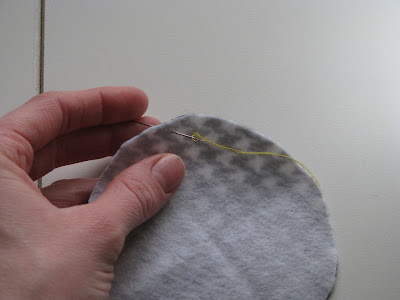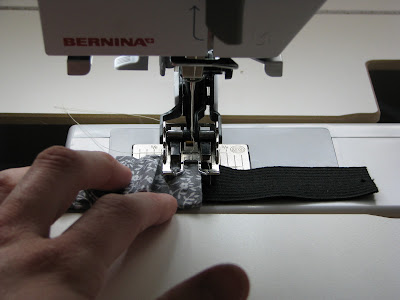Valentines Day is right around the corner. So sit down at your machine and whip up this super girly, super easy skirt for any little girl in your life. Easy to adapt for bigger girls too!
Materials:
-1" wide elastic
-1/4 yard fabric for skirt lining
-1/2 yard fabric for main skirt
-fabric pen or pencil
Measure:
-Hips (around the fullest part of the bum)
-Waist
-Length (how long you want your skirt to be)
*take time at the beginning to take these measurements. It will make construction go much smoother.
Construction:
1. Cut.
-Cut elastic 1" longer than waist measurement.
-Cut skirt lining into a rectangle that is 2" longer than hip measurement by 1" less than length measurement. My hip measured 19 inches and my length was 9. 19 + 2 = 21 and 9 - 1 = 8, so I cut my rectangle 21" x 8". ** UPDATE: I would add at least 4" onto hip measurement to get the width. This will allow for more wiggle room. Especially if making the skirt for a non-baby.
-Cut skirt tiers. Figure out how much of each tier you want to show. About 2 inches for a baby skirt.
If you look at the pictures below, you will see how different it will look if you allow more fabric to show through. The red skirt allows the bottom tiers to peek out 3" while the pink allows only 2". I think less looks better in this case.
For larger skirts, you will want more to show because your top tier will be larger. As a general rule, about half the width of each tier should be visible in the end.
I know this seems confusing, but really all you need to do is take your length measurement, subtract 1" for the waistband then divide the total by 2. This will give you the width of your tiers. My math went something like this: 9 - 1 = 8. 8 / 2 = 4. My tiers should be 4" each. I added 1/2" on to each tier to account for serging. Add a full inch to account for a hem if you will not be serging.
One more example:
For a 15 inch skirt:
15" - 1" = 14"
14" / 2" = 7" (finished tier length)
7 "+ 1/2" = 7 1/2 "tier length to account for serging, add a full inch if you are going to hem)
-The length of each tier should be double the lining width for the bottom two tiers and double the waist measurement for the top tier. My waist measured 17" so my top tier was 34" x 4 1/2". My lining measurement was 21" so my bottom two tiers were 42" X 4 1/2".
The top tier will gather more with the waist band, which is why you need less length than the other tiers.
**If you are not going to serge you will need to hem the bottom of each piece by folding and ironing each piece over 1/4" and then folding and ironing 1/4" again. Top stitch with a 1/8" seam to hold in place. You will finish the top edge of each piece later.
Here's what my finished pieces look like.
3. Mark lining. With your fabric pen, mark the lining fabric by drawing a line where you want the tiers to be. I wanted 2 inches of the middle and bottom tiers to show. For my skirt (with 4" tiers) I drew my first line 2" down from the top of the lining and my second line 2" below that.
5. Gather. Sew a gathering stitch along the top edge of each tier using 1/8" seam. To sew a gathering stitch set your machine to highest tension and longest stitch length. Using a quilting foot also helps the material gather more as you sew. Be sure not to back stitch at the beginning or end of your line. Pull bobbin thread of each tier until they reach the same length around as the skirt lining piece. Spread out the ruffles or gathers by pushing the fabric along the gathering thread until they are evenly spaced. The top tier will be slightly less gathered than the other tiers because it is shorter. This will be fixed as soon as you add the waistband.
6. Pin. Pin the bottom layer onto the lining over the lower line you drew earlier. Pin the middle tier at the top line. Pin the top tier along the top edge of your skirt lining. I chose to pin all the layers first and then sew all at once. In hindsight, I think it may have been easier to pin and sew one at a time.
7. Sew. Sew each tier to the skirt using a 1/4" seam. If you did not serge your edges, you will want to attach the layers using a zig-zag stitch to prevent from fraying and then trim the left over main skirt fabric. Do not cut through the skirt lining.
If you have a serger, serge the top edge of the skirt to finish the edge and get rid of extra fabric. If you will not be serging, zig zag and trim.
9. Sew. Using one hand to stretch the elastic as you go, sew the elastic to the skirt using a zig-zag stitch to allow for some stretch.
**I also attached a gathered flower to the front of the skirt. I used this tutorial for the flower and sewed it directly onto the waistband.
Fun skirt for the fun day.
Perfect for eating grass,
hiding behind trees,
and for playing with dad.
*don't mind the crooked headband
Happy Valentines Day!




















































































